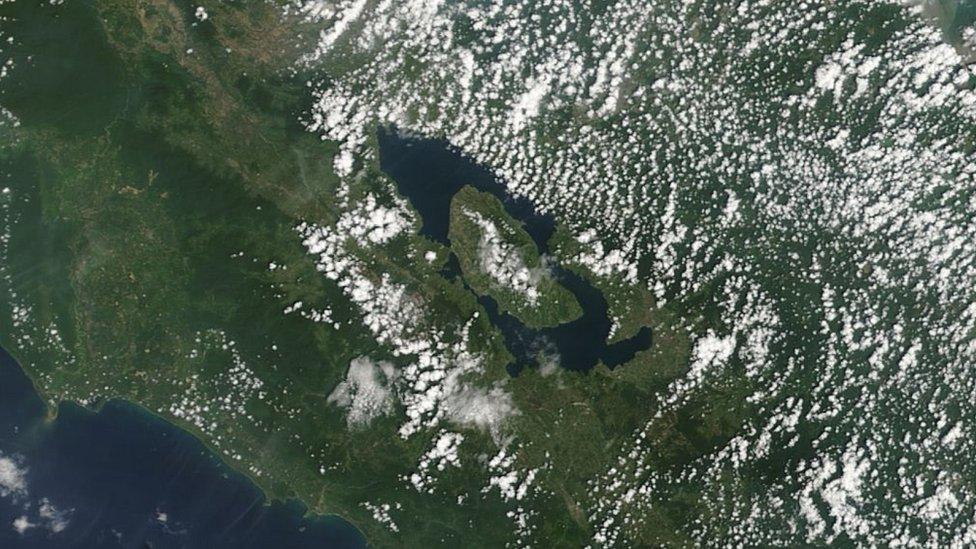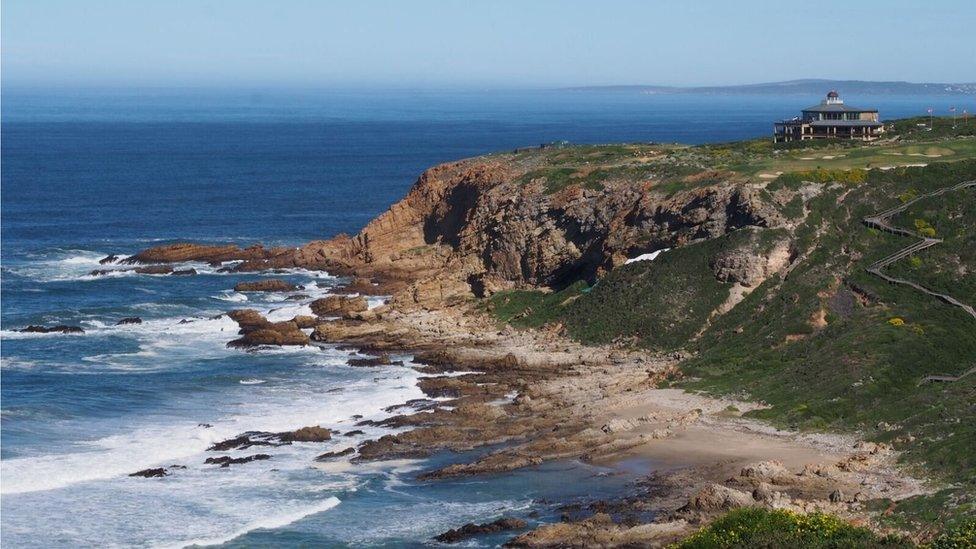Humans 'thrived' after historic Mount Toba eruption
- Published

Volcanic eruptions can throw debris across large distances
Early humans may have flourished after the largest volcanic eruption in history, according to new research.
Mount Toba erupted in Indonesia about 74,000 years ago.
The event was long thought to have caused a volcanic winter, drastically reducing the global human population at the time.
Recent excavations in South Africa suggest that settlements there not only endured the cataclysm, but may have "thrived" in its wake.
The findings complement previous work in Lake Malawi, which searched lake bed cores for evidence of a global climate catastrophe at the time of the eruption, but could find none.
Looking through time
An international team excavated two sites on the south coast of South Africa, finding evidence of human activity both before and after the eruption.
"We're the first ones to really address the question of the Toba hypothesis in Africa. It's in Africa that it really counts, because that's the source location of modern humans," Dr Marean, an author of the paper published yesterday in Nature, external, told BBC News.
The scientists found tiny shards of volcanic glass in the sediment at both sites. These form part of the debris ejected from a volcano during an eruption, known as tephra.
When chemically analysed, the shards were found to be a match for Mount Toba, around 9,000 km away. These are thought to be the first volcanic deposits of their kind recorded so far from their source; further testament to the strength of the Toba eruption.
It is believed to have been the largest on Earth in the last 2.5 million years

Mount Toba's eruption crater is now a lake
Due to lava's distinctive composition, it can be dated using a radioisotope technique called argon-argon dating. This has allowed volcanologists to calculate a fairly narrow window for Toba's eruption.
"The fall of tephra is really about a two week event," explained Dr Marean. "With something that's 74,000 years old, you usually have a 10% margin of error [when dating the event]. Being able to lock in to two weeks... That's as close to a chronological holy grail as you can get!"
Dr Britta Jensen, a volcanologist from the University of Alberta, notes that this is a unique development. "It has been difficult to attribute certain global events to Toba in the past because we have inherent errors in our dating methods.
"The only way to really overcome this is to find the ash itself in... the archaeological record of human occupation," she explains.
A new hope
Dr Marean is confident that the evidence of a human settlement having survived the event is strong.
Though it is "really hard" to estimate population growth or reduction at a particular location using archaeological methods, it is possible to tell how intensely humans were using the site.

Pinnacle Point was one of the two dig sites in the study
Remnants of shells from food preparation and stone flakes from tool making were found.
"After Toba, the intensity of population increased. People were in bigger groups at the site, or staying at the site for longer periods," the scientist said.
Having now pioneered the technique, he and his team are hopeful that other researchers will use similar methods at other sites throughout the African continent.
"We're encouraging people to use those and apply them to other sites so we can see whether other populations intensified after Toba."
Jazmin Scarlett, a historical volcanologist from the University of Hull and visiting researcher at the Laboratory for Past Disaster Science, external, agrees, "These sites are not enough on their own to know for certain the wider climatic impacts of Toba's eruption."